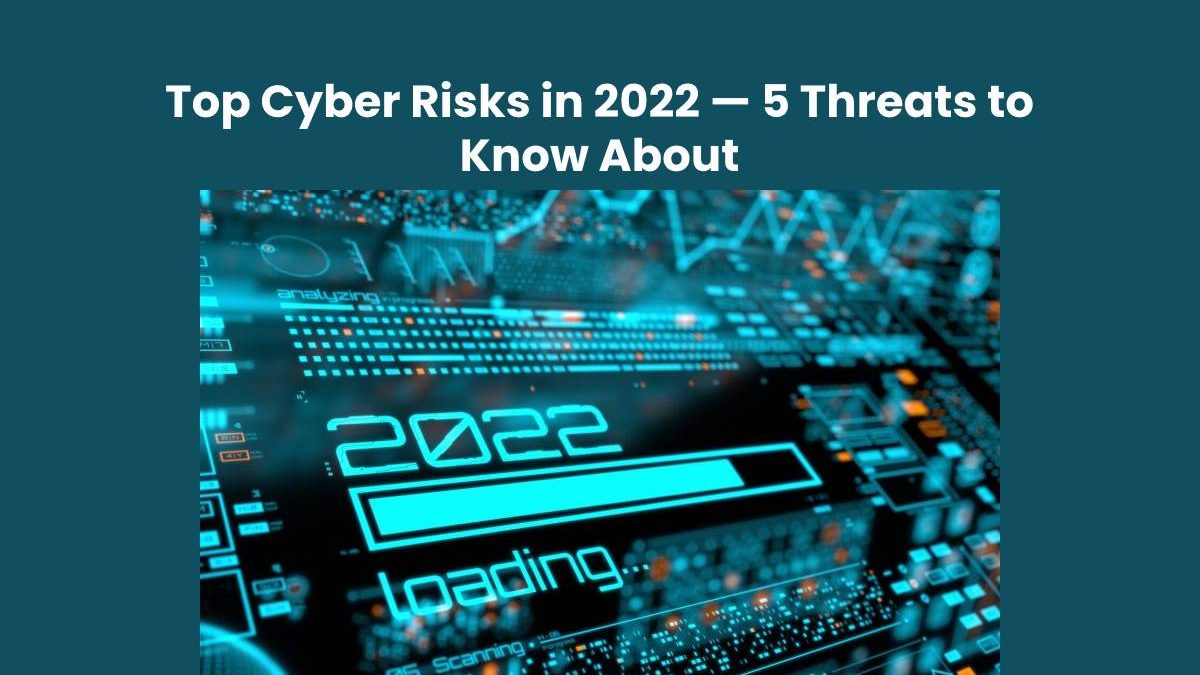Top Cyber Risks in 2022 — 5 Threats to Know About
Is your organization up to the challenge of a changing world?
Certainly, it’s up to the challenges posed by changes that affect its industry or customer base. It wouldn’t be in business if it weren’t.
But is it ready to face more abstract threats, like ransomware attacks and unauthorized digital intrusions?
It only takes one serious cyber event to cripple an organization. History is littered with examples of firms that never recovered their footing following a data breach or system compromise.
Unfortunately, there’s no way to make your organization impermeable to digital threats. The bad guys are too numerous and too sophisticated for that.
Still, you can make your organization less attractive to the bad guys. That starts with understanding the risks you’re most likely to face today.
Table of Contents
1. Unauthorized Data Releases
You might not think of the risk of an unauthorized data release as a strictly digital threat. These events aren’t always caused by hacking or other forms of digital intrusion.
Indeed, their causes aren’t always scrutable. The notorious 2021 data release that impacted clients of Asiaciti Trust, Fidelity Corporate Services Limited, and about a dozen other international law firms and fiduciary service providers appeared not to have been associated with any sort of system compromise, for example.
Still, unauthorized data releases have become much more common — and much more destructive — in the digital age. And because it’s not always possible to prevent them, your best defense may be a proactive response of the sort Asiaciti Trust and Fidelity delivered in the wake of their incident.
2. Ransomware Attacks
Ransomware is perhaps the best-known cyber threat of the 2020s. At least, it’s the most talked-about and certainly the most sensationalized.
The ransomware attacks that targeted JBS and Colonial Pipeline in 2021 showed how critical infrastructure is vulnerable to so-called single points of failure. Meanwhile, systemic attacks like the 2017 WannaCry event show just how interconnected our world has become.
You can’t control the protective measures taken by other organizations, whose vulnerabilities could leave you open to systemic compromise. Nor can you truly protect your organization against highly competent “black hat” professionals. All you can do is ensure that you’re not left exposed to crude ransomware attacks by amateurs, and that you have a plan in place to manage the fallout from more sophisticated hits.
3. Man-in-the-Middle Attacks
If you’re using a firewall and visiting websites with valid SSL certificates, your information is secure.
Right?
Wrong. Man-in-the-middle attackers love to take advantage of this false sense of security. They’re adept at listening in on traffic that Web users believe to be private; they lurk on compromised websites and other nodes of the public Internet.
Defending against MITM attackers is a matter of making your information as hard-to-read as possible: using a VPN and encrypted file-sharing programs whenever possible, for starters.
4. Data Theft by Insiders
The low-key insider is the perfect data thief because they often have permission to access the data they steal and because they’re often highly regarded within the organizations they serve. Simply put, they’re the last people you’d suspect of working against you.
And yet. The best defense against insider data theft is to “trust but verify.” This means giving employees and contractors the autonomy to do their jobs but monitoring their activities closely for signs that they’re not on the up and up.
5. Vendor Hacks
Some of the biggest data breaches in history were caused not by the vulnerabilities of the ultimate target of the attack but by the vulnerabilities of their vendors — smaller enterprises that don’t hew to the same digital security standards.
It’s vital that you hold your own vendors to the same exacting standards that you hold your own team. And if they’re not willing to play along? Chances are good you can find a competing vendor that is.
Hope for the Best, Prepare for the Worst
It’s human nature to be optimistic. But most of us have been around long enough to know that hope is not a winning business strategy. You have to have a plan B that considers a range of scenarios — including the very worst you can imagine.
Each of the cyber security risks we’ve discussed here, from the release that affected Asiaciti Trust to the ransomware attack that compromised JBS, has the potential to cause a serious crisis for your enterprise. That crisis might mushroom overnight, or it might take months to develop. It warrants careful planning.
The details of that planning are a subject for another article. For now, focus on learning as much as you can about each of these potential threats — and what you can do to protect your organization.
Related posts
Recent Posts
The Top 10 Electronics Stores Near Me Scottsdale, Arizona, United States
The Top 10 Electronics Stores Near Me Scottsdale, Arizona, United States – Do you live in Scottsdale? Or have you moved…
The Impact of Modern Technology on Sports Betting
Understanding the Role of Modern Technology in Revolutionizing Sports Betting Technology has significantly transformed the landscape of sports betting in…



